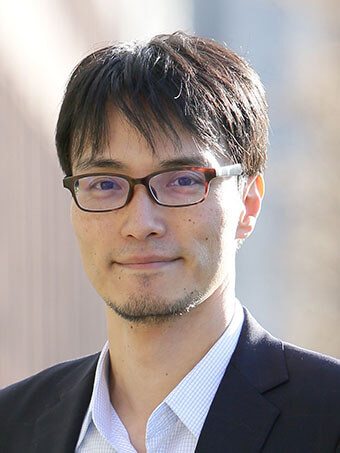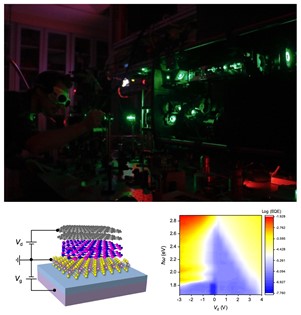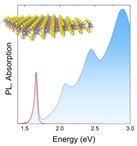
Email: g.eda@nus.edu.sg
Office: S13-02-05
Tel: +65 6516 2970
Research interests
- My research explores the electronic and optoelectronic properties of atomically thin van der Waals crystals, aka 2D materials, and their heterostructures where a host of peculiar condensed matter phenomena emerge due to strong many-body effects and reduced symmetry. I’m particularly interested in exploiting these properties to develop novel devices such as memory field-effect transistors, hot carrier photovoltaic cells, on-chip electro-optic modulators and quantum LEDs. My research is interdisciplinary involving elements of condensed matter physics, materials chemistry, and quantum photonics. We experimentally probe 2D materials using a combination of laser spectroscopy and charge transport techniques. We also grow our own van der Waals crystals with the desired phase, composition, and structure. This enables us to engineer the phenomena of interest and realize functional devices. Topics of my current research include single exciton trapping, ferromagnetic semiconductors, substitutional impurity doping, and bulk photovoltaic effect.
- Leyi Loh, Yifeng Chen, Junyong Wang, Xinmao Yin, Chi Sin Tang, Qi Zhang, Kenji Watanabe, Takashi Taniguchi, Andrew TS Wee, Michel Bosman, Su Ying Quek, Goki Eda* “Impurity-Induced Emission in Re-Doped WS2 Monolayers” Nano Lett. 21, 5293 (2021).
- I. Verzhbitskiy, H. Kurebayashi, H. Cheng, J. Zhou, S. Khan, Y.P. Feng, G. Eda “Controlling the magnetic anisotropy in Cr2Ge2Te6 by electrostatic gating” Nat. Electron, 3, 460 (2020).
- E. Linardy, M. Trushin, K. Watanabe, T. Taniguchi, G. Eda “Electro‐Optic Upconversion in van der Waals Heterostructures via Nonequilibrium Photocarrier Tunneling” Adv. Mater. 32, 2001543 (2020)
- Eric Linardy, Dinesh Yadav, Daniele Vella, Ivan A Verzhbitskiy, Kenji Watanabe, Takashi Taniguchi, Fabian Pauly, Maxim Trushin, Goki Eda “Harnessing exciton–exciton annihilation in two-dimensional semiconductors” Nano Lett. 20, 1647 (2020)
- J. Wang, I. Verzhbitskiy, G. Eda “Electroluminescent Devices Based on 2D Semiconducting Transition Metal Dichalcogenides” Adv. Mater. 1802687 (2018).
- S. Li, Y.C. Lin, W. Zhao, J. Wu, Z. Wang, Z. Hu, Y. Shen, D.M. Tang, J. Wang, Q. Zhang, H. Zhu, L. Chu, W. Zhao, C. Liu, Z. Sun, T. Taniguchi, M. Osada, W. Chen, Q.H. Xu, A.T.S. Wee, K. Suenaga, F. Ding, G. Eda “Vapor-liquid-solid growth of monolayer MoS2 nanoribbons” Nat. Mater. 17, 535 (2018).
- Dean’s Chair
- Associate Editor of npj 2D Materials and Applications
- Outstanding Scientist Award (National University of Singapore), 2020
- President’s Science and Technology Young Scientist Award (Singapore National Academy of Science), 2015
- Singapore National Research Foundation Research Fellowship, 2011
- Eda Lab

Exciton photonics
Tightly bound excitons in 2D semiconductors are manifestation of strong many-body interaction. They mediate the strong light-matter interaction and a range of unusual photophysical phenomena that are attractive for communication and sensing. We study how excitons in 2D semiconductors can be electrically manipulated to achieve the desired light-emitting and absorbing characteristics.

Electrically tunable magnetism
Electrical control of magnetic order has been a long standing challenge in the past few decades. The ability to alter the magnetic ground state of a material in a manner similar to electrical gating of charge current in a field effect transistor is key to low power spintronic devices. Recent discoveries of tunable magnetism in 2D materials such as CrI3 and Fe3GeTe2 showed great opportunities in this respect. We recently showed that degenerately electron-doped Cr2Ge2Te6 (CGT), a van der Waals ferromagnetic semiconductor, exhibits remarkably enhanced Curie temperature and unusual rotation of its easy axis [1]. We aim to shed light on the underlying mechanism of electrically tunable magnetism in 2D systems and demonstrate a route towards practical device development.
[1] I. Verzhbitskiy, et al. Nat. Electron, 3, 460 (2020).

Vapor-liquid-solid growth
[2] Li et al. Nat. Mater. 17, 535 (2018)
